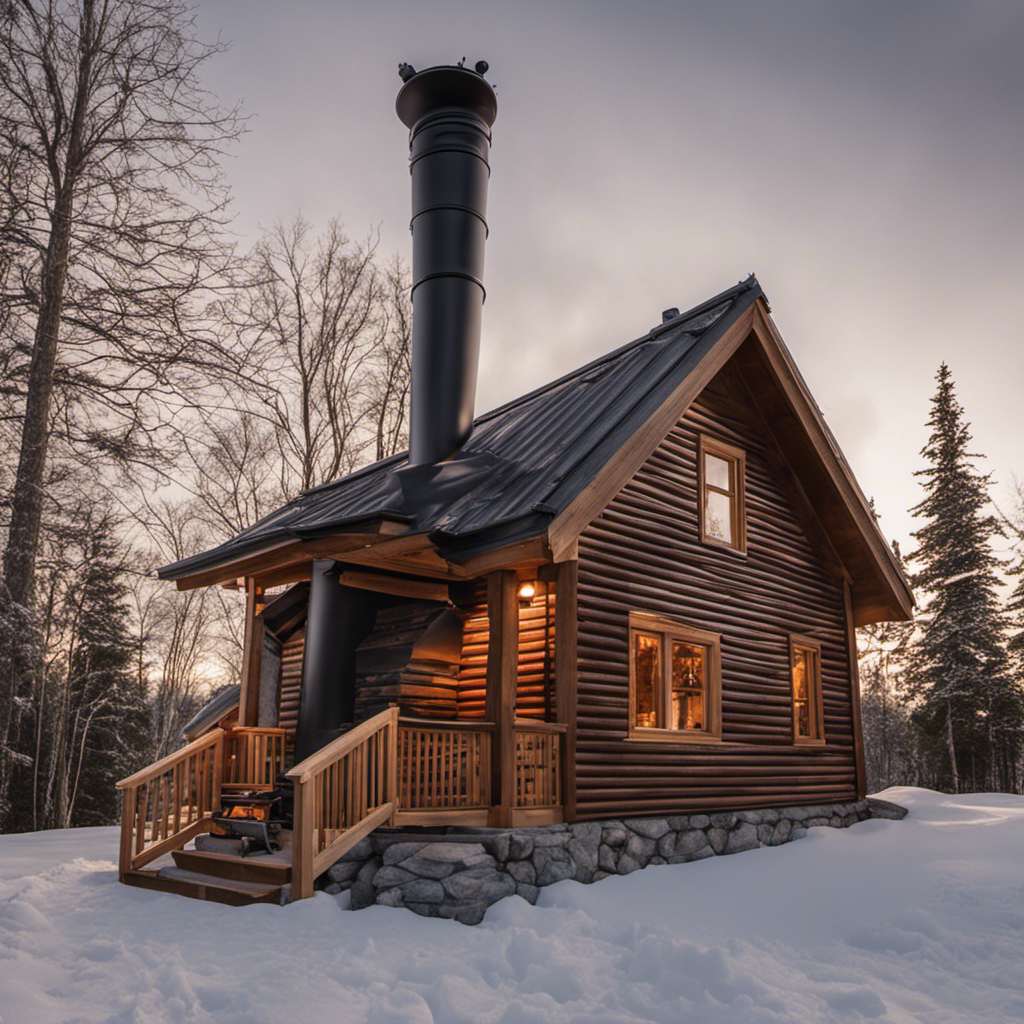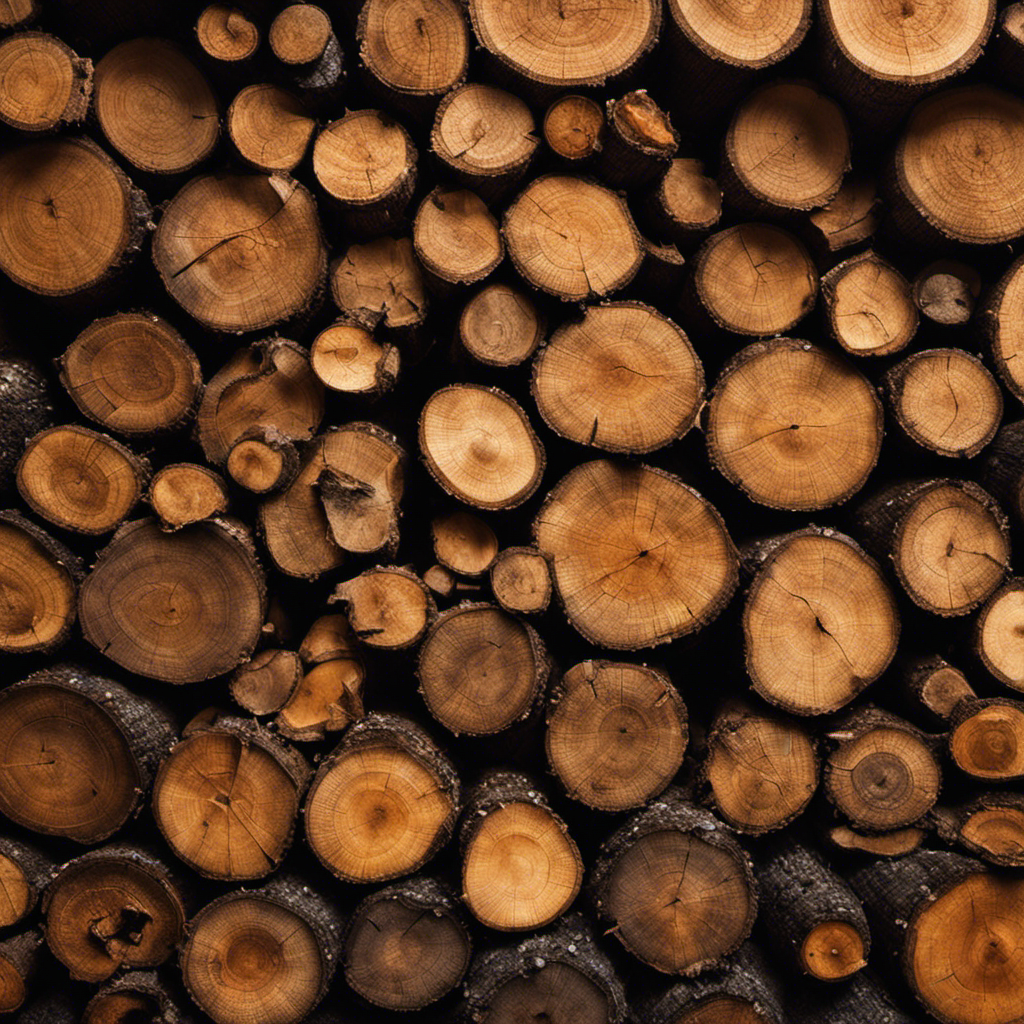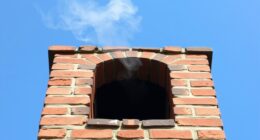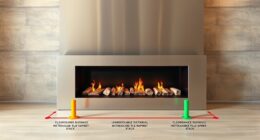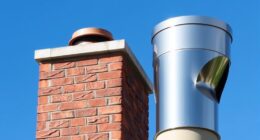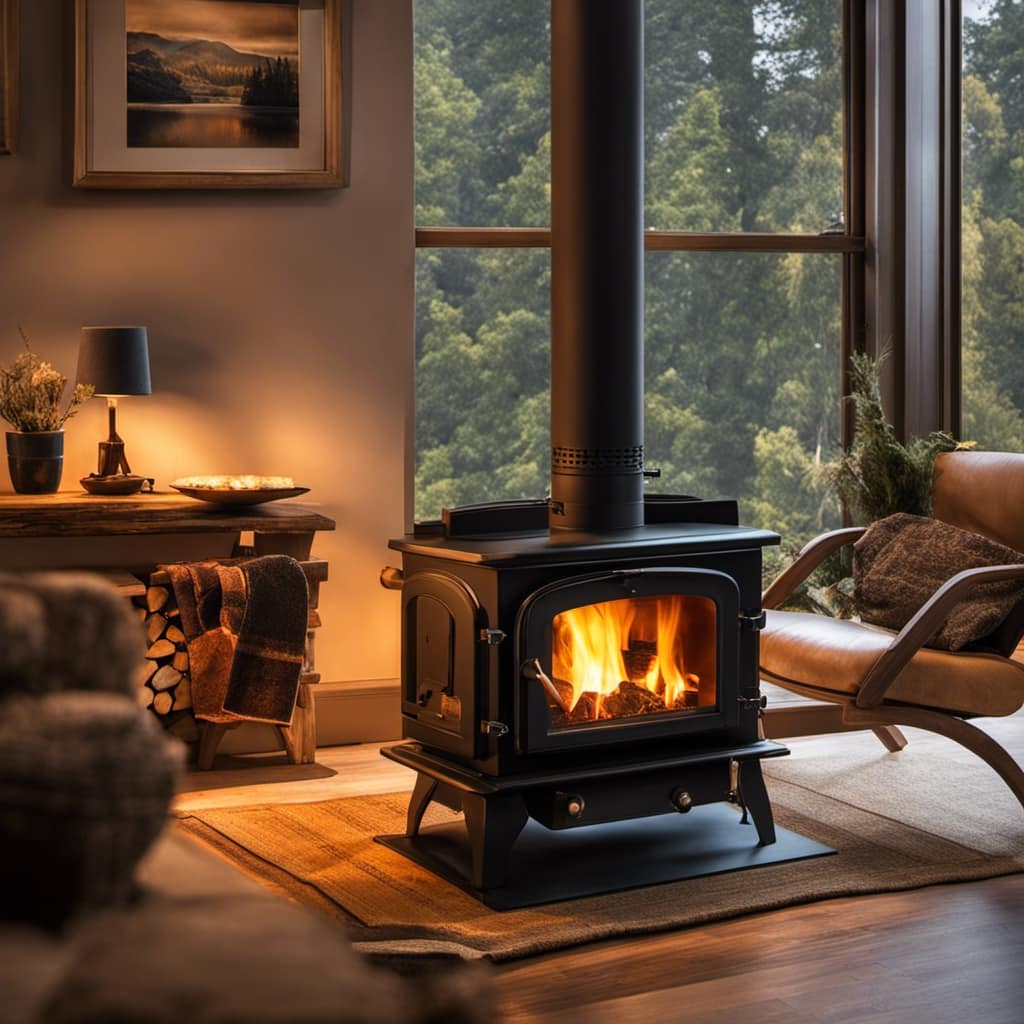
When I stepped outside into the cool morning air, I saw smoke coming from my neighbor’s wood stove, which piqued my curiosity and prompted me to look into the reasons and possible solutions for this situation.
In this article, I will explore the common reasons behind excessive smoke during wood stove startup and provide tips on how to properly prepare and ignite a wood stove.
Additionally, I will discuss essential maintenance steps and alternative heating options to minimize smoke emission.
Key Takeaways
- Improper use of dampers can cause excessive smoke during wood stove startup
- Cleanliness of the chimney affects airflow and can lead to smoke buildup
- Using dry and seasoned wood, as well as properly igniting the fire, can help reduce smoke emission
- Alternative heating options like pellet stoves or EPA-certified wood stoves can minimize smoke output during startup
Common Causes of Excessive Smoke During Wood Stove Startup
I’ve noticed that one of the common causes of excessive smoke during wood stove startup is the improper use of dampers. When starting a wood stove, it’s important to ensure that the dampers are fully open to allow for proper airflow.
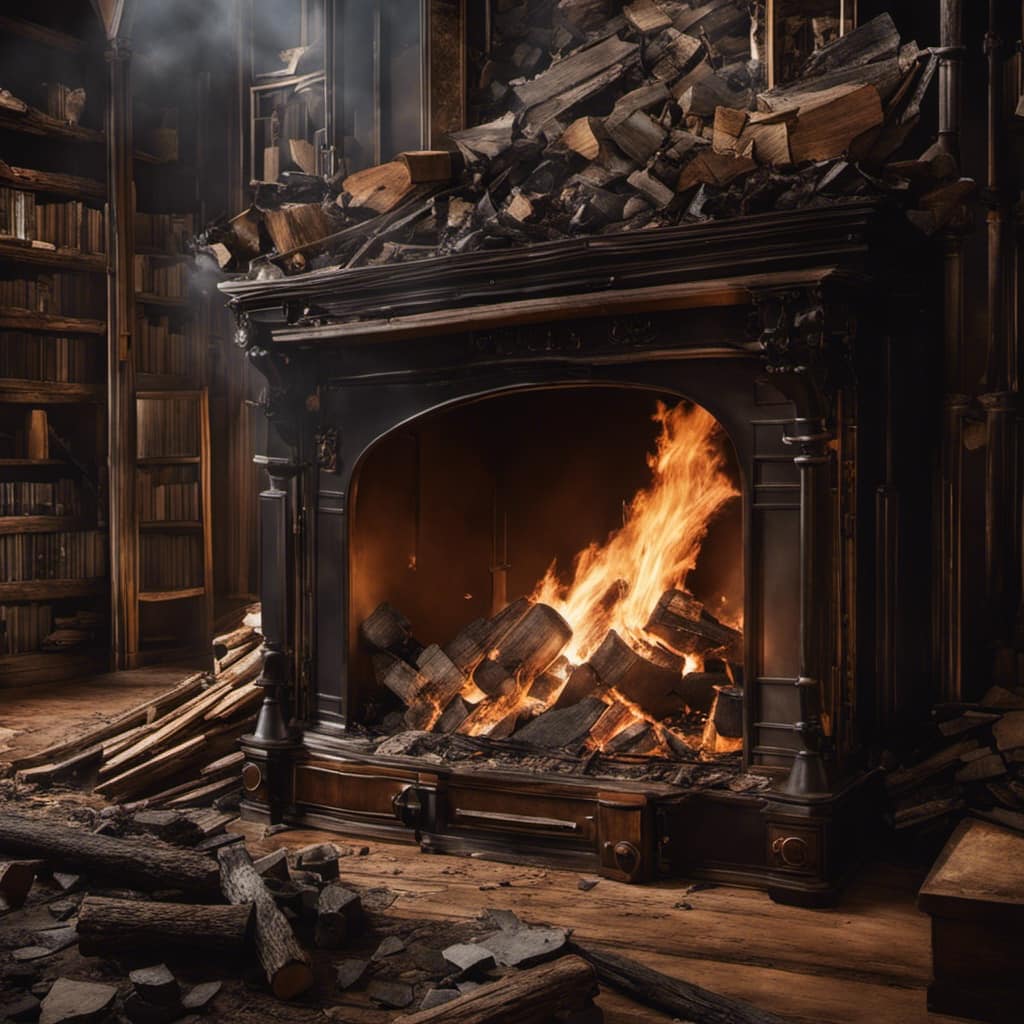
If the dampers are closed or only partially open, the smoke may not be able to escape efficiently, resulting in a buildup of smoke inside the stove and eventually causing it to escape into the room. This can be easily resolved by checking the position of the dampers before lighting the fire.
Additionally, it’s essential to use dry and seasoned wood to minimize smoke production. Troubleshooting smoke issues during wood stove startup requires attention to proper damper usage and wood selection.
Understanding the Role of Airflow in Smoke Production
When there isn’t enough airflow, the smoke produced by a wood stove can become more noticeable. Proper airflow is crucial for efficient combustion and smoke reduction. One important factor that affects airflow is the cleanliness of the chimney. A dirty chimney can obstruct the flow of smoke, causing it to linger in the stove and escape into the room. Regular chimney cleaning is essential to prevent this buildup and ensure optimal airflow. Additionally, weather conditions can also impact smoke production. Wind can either aid or hinder the draft, influencing how effectively the smoke is carried out of the stove and up the chimney. Understanding the role of airflow and considering the impact of weather conditions can help homeowners address smoke issues and create a more comfortable and clean burning experience.
| Column 1 | Column 2 | Column 3 |
|---|---|---|
| Importance of Chimney Cleaning | Impact of Weather Conditions on Smoke Production | Airflow and Smoke Reduction |
| Regular chimney cleaning prevents smoke buildup | Wind can affect the draft and smoke movement | Proper airflow is vital for smoke reduction |
| Dirty chimneys obstruct smoke flow | Strong winds can aid in smoke removal | Insufficient airflow leads to noticeable smoke |
| Clean chimneys promote efficient combustion | Calm weather can hinder smoke ventilation | Understanding airflow helps address smoke issues |
Tips for Properly Preparing and Igniting a Wood Stove
To ensure a successful fire, I always make sure to properly prepare and ignite the wood in my stove. Wood stove safety is crucial to prevent any potential accidents or issues.
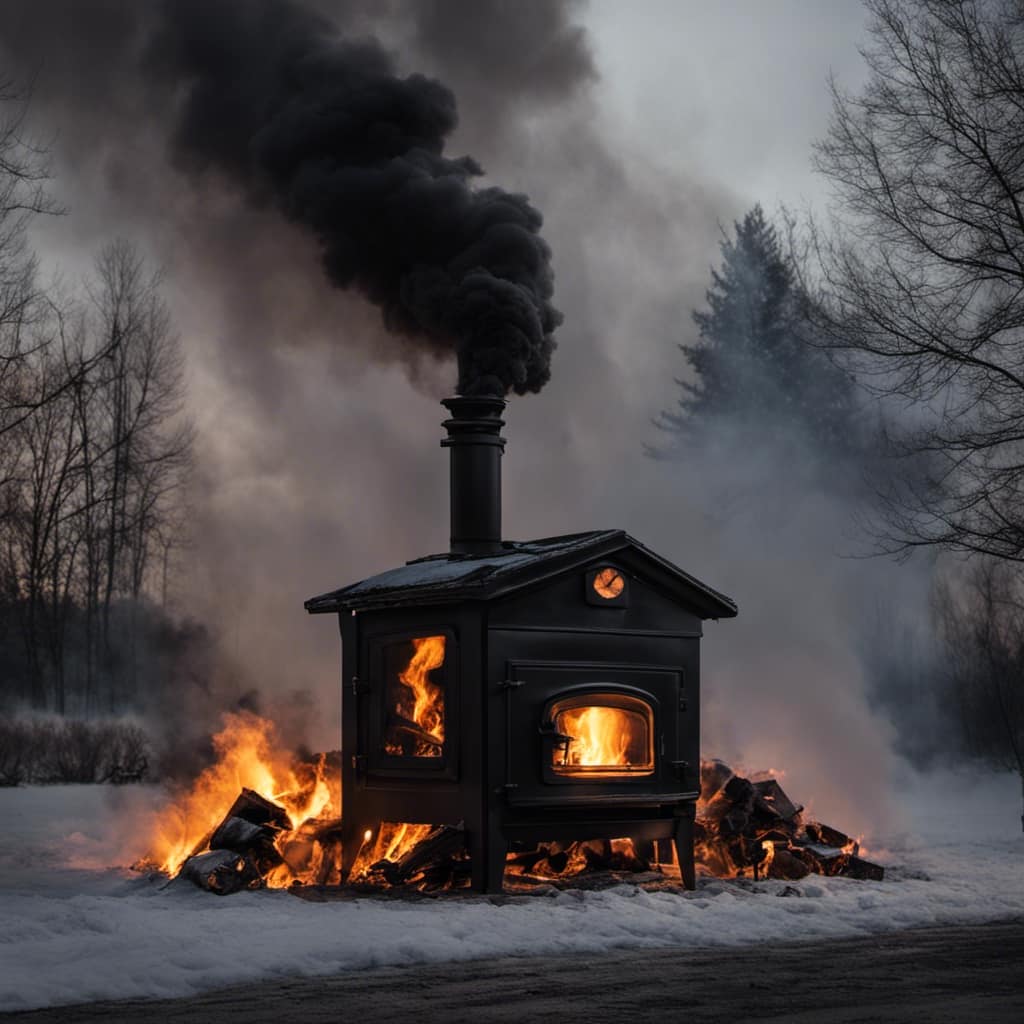
When preparing the wood, it’s important to use dry and seasoned wood, as wet or green wood can produce excessive smoke. I also ensure that the wood is cut into smaller pieces, allowing for better airflow and more efficient combustion.
When igniting the fire, I start by placing a few pieces of crumpled newspaper or small twigs at the bottom of the stove. Then, I add small pieces of wood on top, gradually increasing the size as the fire grows stronger.
Essential Maintenance Steps to Reduce Smoke Emission
Reducing smoke emission is essential. So, I regularly clean the chimney to ensure proper airflow and prevent any build-up that could hinder the efficiency of my wood stove.
Troubleshooting techniques for wood stove smoke issues can help identify and address common problems. One possible issue could be a lack of proper draft, which may be caused by a closed damper or inadequate air supply. Ensuring that the damper is fully open and providing enough oxygen to the fire can alleviate this problem.

Another potential cause of smoke is wet or unseasoned wood, which can lead to incomplete combustion. Using dry, properly seasoned wood can significantly reduce smoke output.
It’s important to consider the environmental impact of wood stove smoke and how to mitigate it. Opting for cleaner burning fuels, such as pellet stoves or EPA-certified wood stoves, can minimize smoke emissions and promote a healthier environment.
Transitioning to alternative heating options to minimize smoke output is a proactive step towards reducing the environmental impact of wood stove smoke.
Alternative Heating Options to Minimize Smoke Output
I’ve found that using a pellet stove or an EPA-certified wood stove significantly reduces smoke emissions and promotes a healthier environment. These renewable energy alternatives are not only more efficient but also contribute to indoor air quality improvements. Let’s take a closer look at their features:
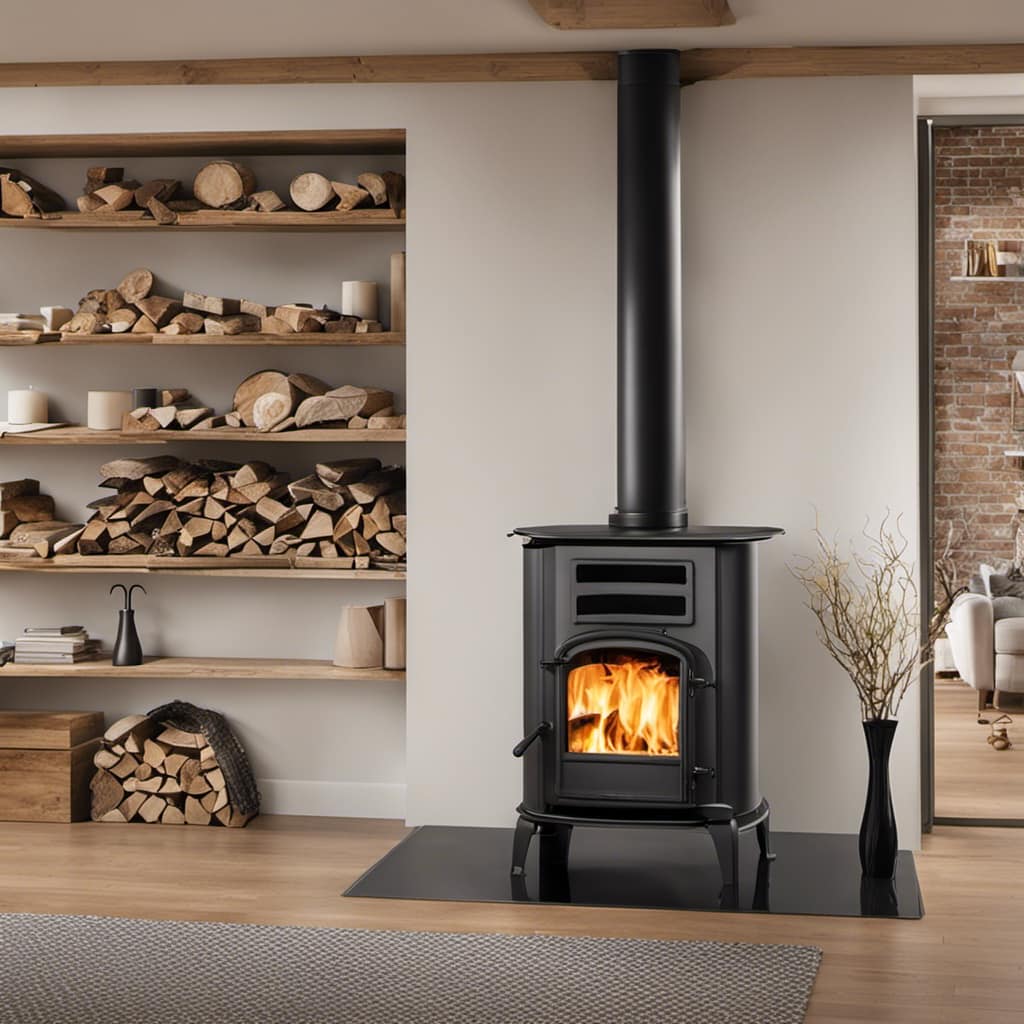
| Heating Option | Features | Benefits |
|---|---|---|
| Pellet Stove | – Burns small, compressed pellets made from renewable sources such as sawdust or agricultural waste. | – Low emissions, minimal smoke output. |
| – Automatic ignition and temperature control. | – Increased convenience and efficiency. | |
| EPA-certified Wood Stove | – Designed to meet strict emission standards set by the Environmental Protection Agency. | – Reduced smoke emissions, better combustion. |
| – Efficient burning, maximizing heat output. | – Improved energy efficiency, lower fuel consumption. |
Frequently Asked Questions
How Can I Troubleshoot Excessive Smoke During Wood Stove Startup?
To troubleshoot excessive smoke during wood stove startup, try these tips: Ensure proper ventilation, use dry and seasoned wood, clean the chimney regularly, and check for any blockages. These steps can help reduce smoke emission.
What Are Some Common Mistakes People Make When Preparing and Igniting a Wood Stove That Can Lead to Excessive Smoke?
Common mistakes when preparing and igniting a wood stove that lead to excessive smoke include using wet or unseasoned wood, not opening the damper fully, and not properly priming the stove. Troubleshooting excessive smoke involves addressing these issues.
Are There Any Specific Maintenance Steps I Can Take to Reduce Smoke Emission From My Wood Stove?
To reduce smoke emission, I recommend regular maintenance tips for your wood stove. Clean the chimney and flue, ensure proper airflow, and use dry wood. These steps can help minimize smoke when starting.
Can You Explain the Role of Airflow in Smoke Production During Wood Stove Startup?
The importance of proper ventilation in reducing smoke production during wood stove startup cannot be emphasized enough. Additionally, the impact of fuel quality on smoke emission during this process should be taken into consideration.
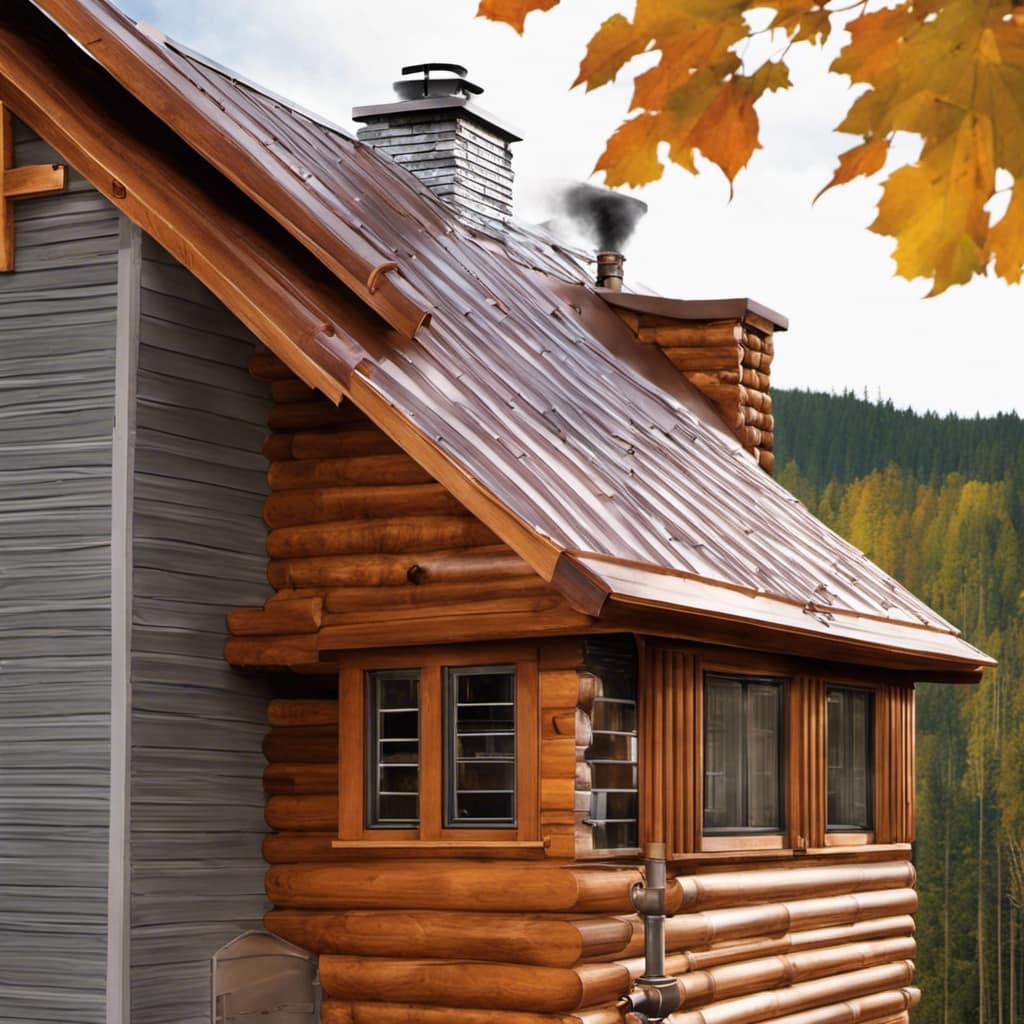
What Are Some Alternative Heating Options That Produce Less Smoke Compared to Wood Stoves?
Alternative fuel sources and smokeless heating methods are important considerations when looking for heating options that produce less smoke compared to wood stoves. These options can help minimize air pollution and improve indoor air quality.
Conclusion
In conclusion, by following the proper techniques for starting and maintaining a wood stove, you can minimize smoke emissions and ensure a more efficient and enjoyable heating experience.
Remember to focus on airflow, prepare the stove properly, and perform regular maintenance to reduce smoke output.
If smoke continues to be a problem, consider exploring alternative heating options that may be more environmentally friendly and efficient.

Growing up surrounded by the vast beauty of nature, Sierra was always drawn to the call of the wild. While others sought the comfort of the familiar, she ventured out, embracing the unpredictable and finding stories in the heartbeat of nature.
At the epicenter of every remarkable venture lies a dynamic team—a fusion of diverse talents, visions, and passions. The essence of Best Small Wood Stoves is crafted and refined by such a trio: Sierra, Logan, and Terra. Their collective expertise has transformed the platform into a leading authority on small wood stoves, radiating warmth and knowledge in equal measure.




